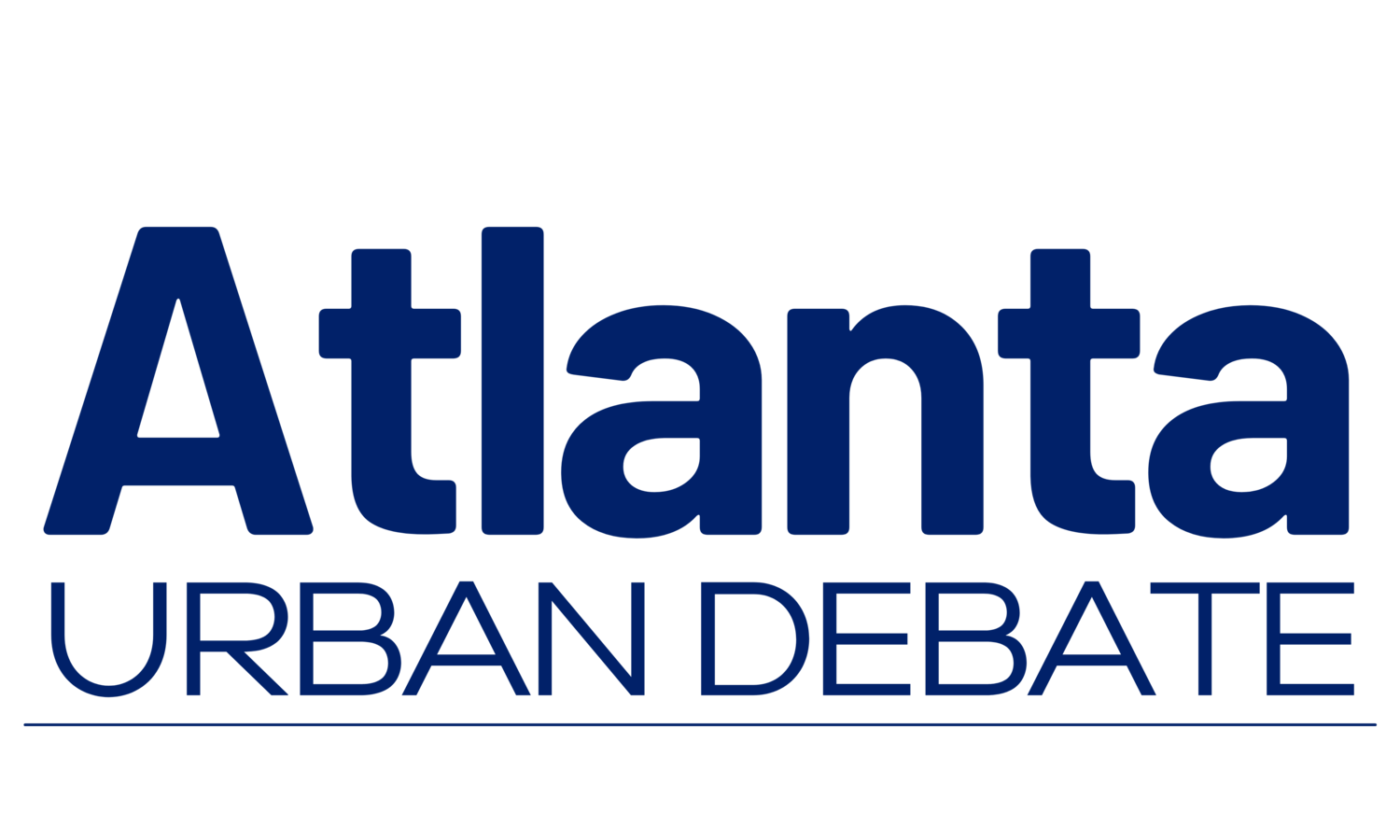The Atlanta Urban Debate League is committed to providing excellent debate education programs, services, and opportunities to diverse students, educators, and members of the community!
HS Open Curriculum
Spreading: Getting Faster and Clearer
What Is Spreading and Why Do We It?
Spreading, or speed reading, is a practice in advanced policy debate where debaters talk at a much faster pace while reading a speech. While speed reading may seem strange at first, it allows debaters to read more arguments and have more in-depth debates. Furthermore, debaters must maintain clarity while spreading, so the judge can understand what the debater is saying. As such, advanced debaters should do a variety of speaking/spreading drills for around 15-20 minutes a day to become faster and clearer.
Types of Speaking/Spreading Drills
- Speed Drills: This type of drill helps debaters read more pieces of evidence or arguments during a speech.
- Speed drills practice reading words without understanding what those words are saying.
- This makes you speak faster because your brain doesn’t have to comprehend what the text says.
- Additionally, try not to do spreading drills with the same sets of evidence every time.
- Your brain will memorize the text, so your speed will not improve.
- Drill #1: The "A" Drill
- Say the word ‘a’ between every word that you are reading in one-minute intervals.
- Example: “The child leaped over a log” becomes “The a child a leaped a over a a a log a.”
- This drill works on developing a rhythm when speaking, which can improve your speed.
- It also improves enunciation of words because you must pay attention to every word you say.
- Advanced debaters can replace the word ‘a’ with a longer word, such as ‘watermelon.’ This will increase the difficulty of the drill.
- Drill #2: The Backwards Drill
- Read a piece of evidence backwards in one-minute intervals.
- Example: “The child leaped over a log” becomes “log a over leaped child The.”
- This drill works on reading words without understanding what those words actually mean.
- Evidence read backwards doesn’t make grammatical sense, so you are just reading random words quickly.
- Speed drills practice reading words without understanding what those words are saying.
- Clarity Drills: This type of drill helps ensure that the judge can understand every word that a debater is saying, even if the debater is talking at a fast pace.
- Drill #3: The Over-Exaggeration Drill
- Say every word in a piece of evidence, overexaggerating every word with your mouth in 30-second intervals.
- This drill improves on enunciation and clarity.
- It forces unnatural overemphasis, which makes you clearer when you speak normally.
- Drill #4: The Pen Drill
- Put a pen (or other similarly sized item) into your mouth, and read a piece of evidence while keeping the pen in your mouth in one-minute intervals.
- This drill improves on enunciation.
- Similar to Drill #3, this drill forces you to overemphasize with the pen as a constraint on your mouth’s movement.
- As such, the drill will make you speak much more clearly when you speak normally.
- Drill #3: The Over-Exaggeration Drill
- Endurance Drills: This type of drill helps debaters to be able to spread through a full 8-minute speech while maintaining speed, clarity, and persuasion throughout.
- Drill #5: The Endurance Drill
- Open up an extremely large file (think 2AC blocks or impact defense file), and read straight down for ten minutes.
- This drill will help you get accustomed to the length of constructive speeches.
- In addition, this drill will help you practice the speed and clarity skills you have learned with the other drills.
- Advanced debaters can increase the time of spreading to 20 minutes to really test their endurance.
- Open up an extremely large file (think 2AC blocks or impact defense file), and read straight down for ten minutes.
- Drill #5: The Endurance Drill
